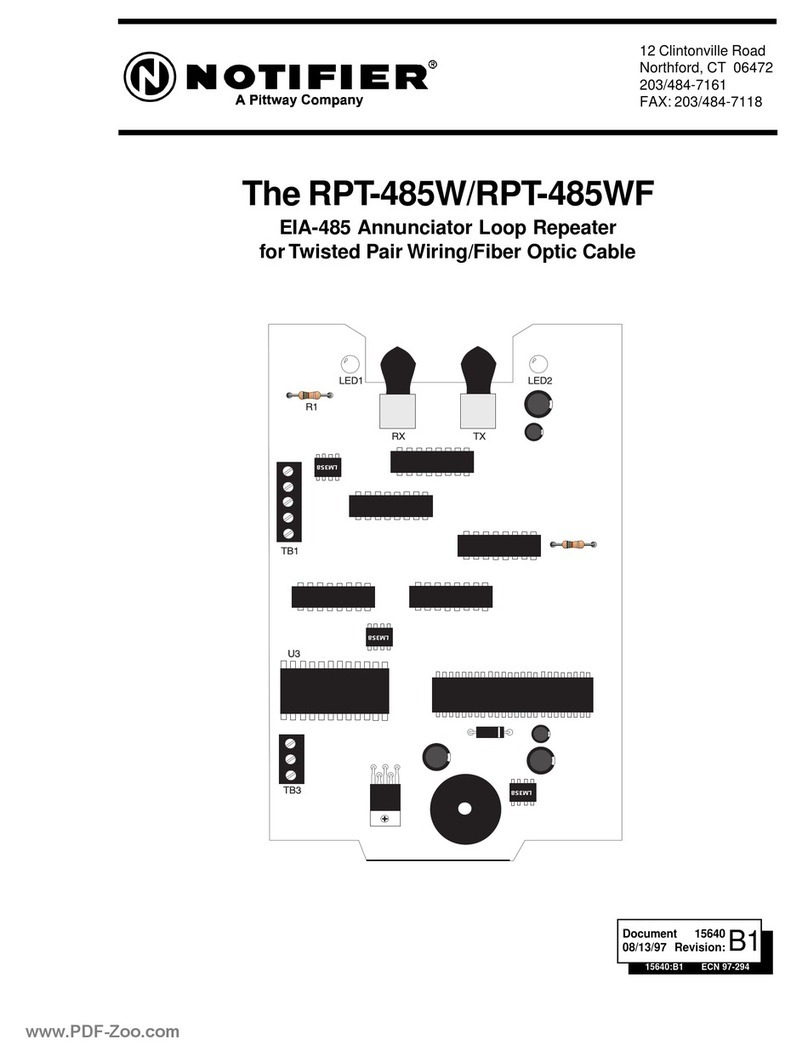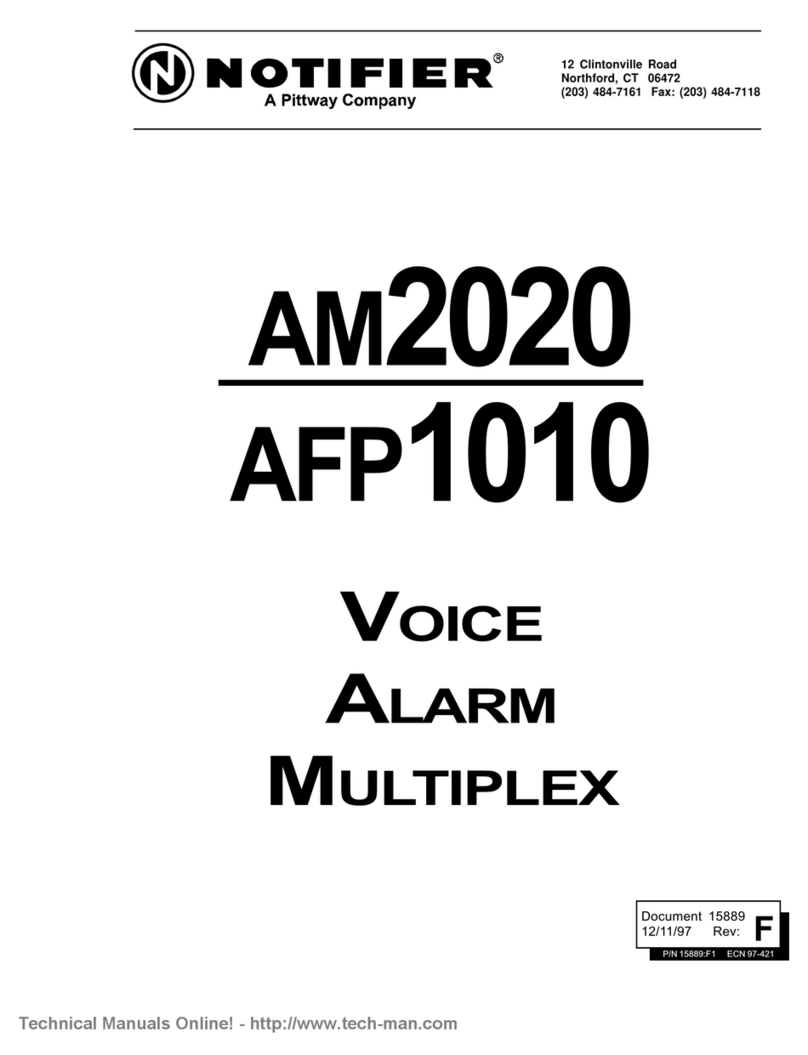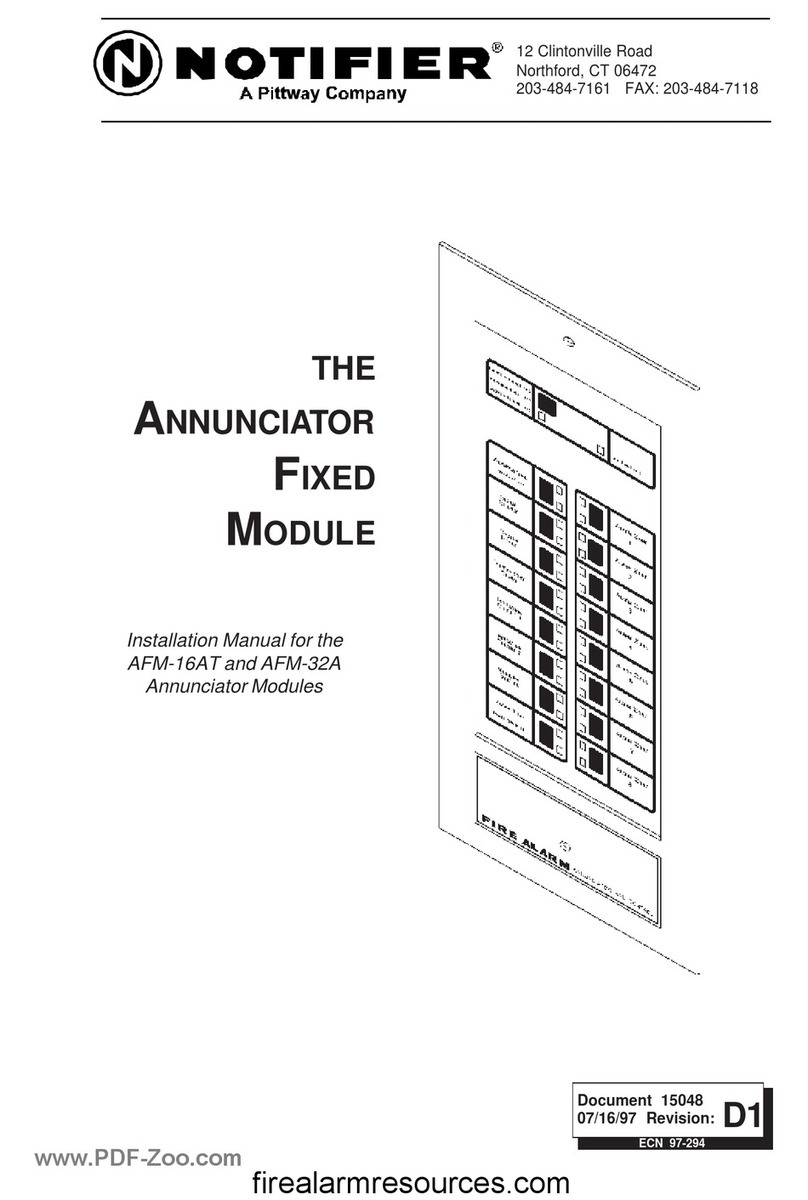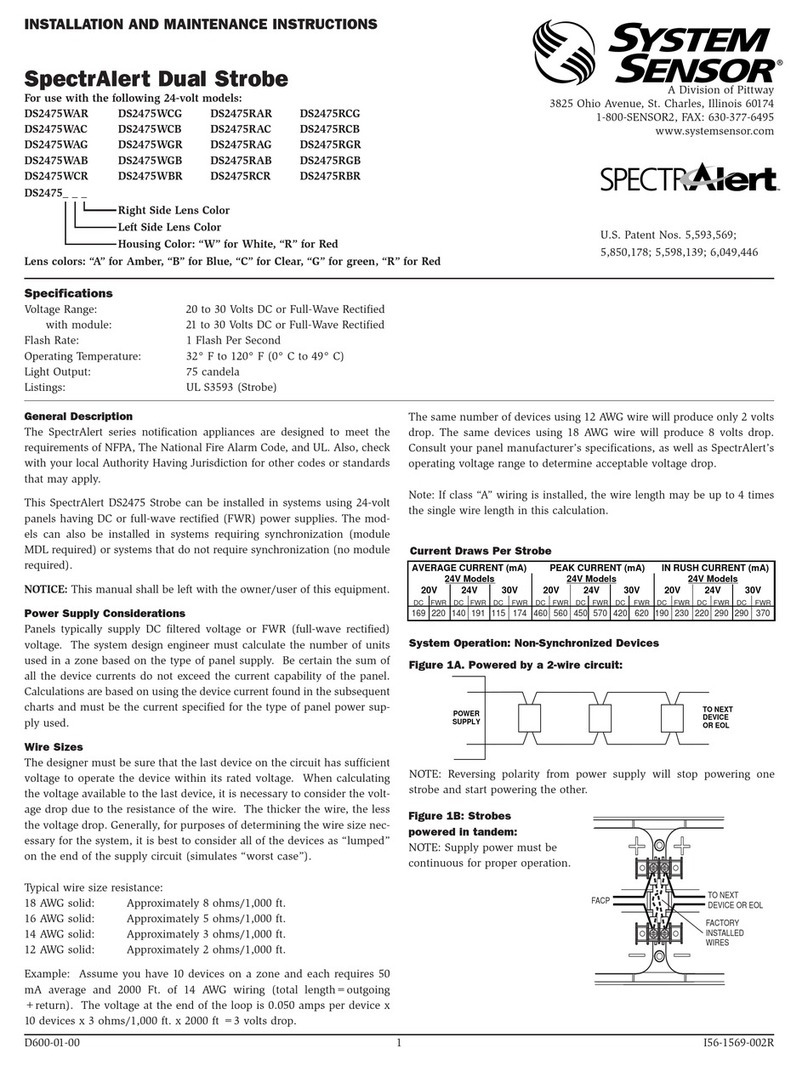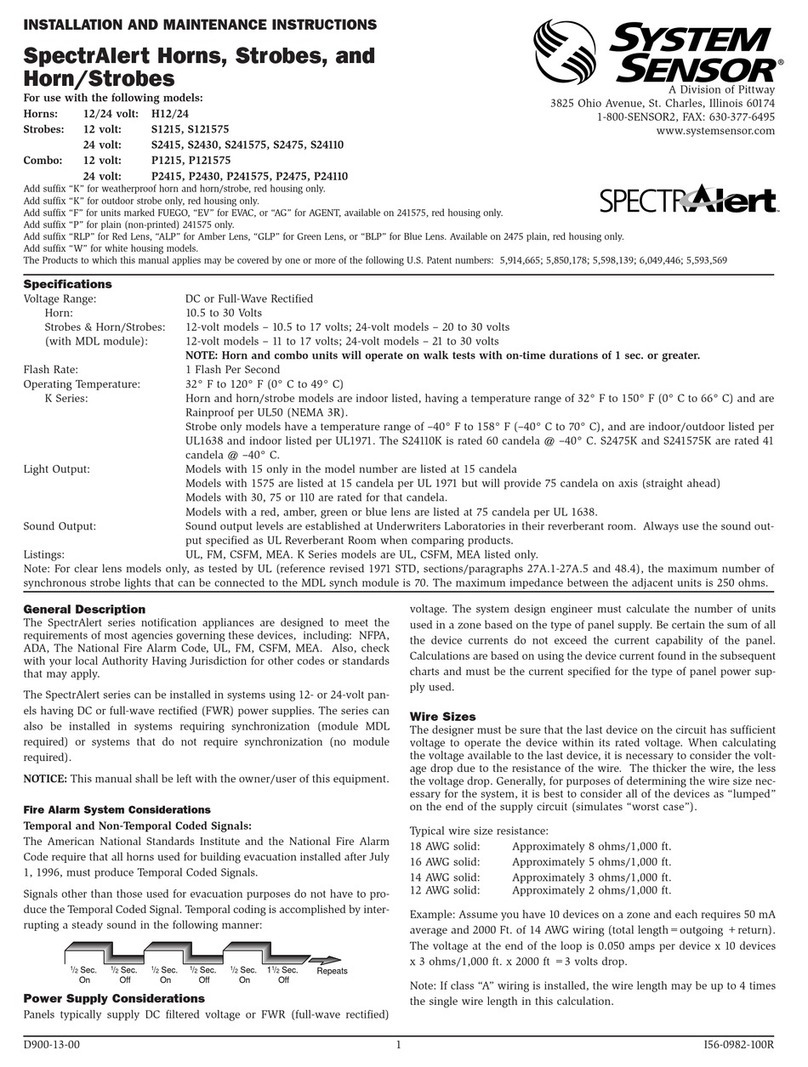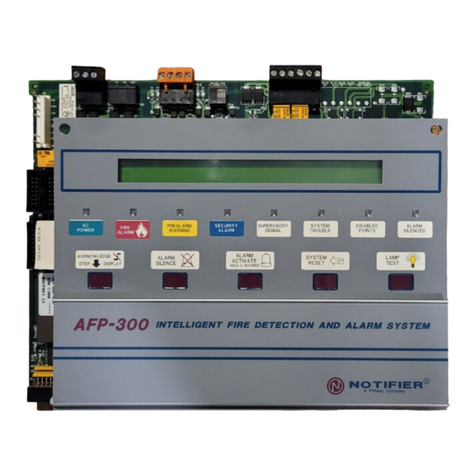D900-22-00 1 I56-1453-006R
SpectrAlert Ceiling Mount Series Strobes,
and Horn/Strobes
For use with the following models:
Strobes: 24 volt: SC2415W, SC241575W, SC2430W, SC2475W, SC2495W, SC24115W, SC24177W
Horn/Strobes: 24 volt: PC2415W, PC241575W, PC2430W, PC2475W, PC2495W, PC24115W, PC24177W
Remove suffix “W”for red models.
Add suffix “P”for models with plain housing.
The Products to which this manual applies may be covered by one or more of the following U.S. Patent numbers:
5,914,665; 5,850,178; 5,598,139; 6,049,446; 6,057,778; D424465
INSTALLATION AND MAINTENANCE INSTRUCTIONS
A Division of Pittway
3825 Ohio Avenue, St. Charles, Illinois 60174
1-800-SENSOR2, FAX: 630-377-6495
www.systemsensor.com
General Description
The SpectrAlert ceiling mount series notification appliances are designed to
meet the requirements of most agencies governing these devices, includ-
ing: NFPA, The National Fire Alarm Code, UL, FM, CSFM, MEA. Also,
check with your local Authority Having Jurisdiction for other codes or stan-
dards that may apply.
The SpectrAlert ceiling mount series can be installed in systems using 24-
volt panels having DC or full-wave rectified (FWR) power supplies. The
series can also be installed in systems requiring synchronization (module
MDL required) or systems that do not require synchronization (no module
required).
NOTICE: This manual shall be left with the owner/user of this equipment.
Fire Alarm System Considerations
Temporal and Non-Temporal Coded Signals:
The American National Standards Institute and the National Fire Alarm
Code require that all horns used for building evacuation installed after July
1, 1996, must produce Temporal Coded Signals.
Signals other than those used for evacuation purposes do not have to pro-
duce the Temporal Coded Signal. Temporal coding is accomplished by inter-
rupting a steady sound in the following manner:
Power Supply Considerations
Panels typically supply DC filtered voltage or FWR (full-wave rectified)
voltage. The system design engineer must calculate the number of units
used in a zone based on the type of panel supply. Be certain the sum of
Specifications
Mechanical
Input Terminals: 12 to 18 AWG (3.31 to 0.82 mm2)
Overall Dimensions: 6.8″diameter (173 mm)
Operating Temperature: 32°F to 120°F (0°C to 49°C)
Electrical
Voltage Range: DC or Full-Wave Rectified
15 candela through 115 candela models
Strobes & Horn/Strobes: 16 to 33 volts DC or Full Wave Rectified
(with MDL module): 17 to 33 volts DC or Full Wave Rectified
177 candela models only
Strobes & Horn/Strobes: 16 to 33 volts DC; 20 to 33 volts Full Wave Rectified
(with MDL module): 17 to 33 volts DC; 21 to 33 volts Full Wave Rectified
NOTE: Horn/Strobes units will operate on walk tests with on-time durations of 1 sec. or greater.
Flash Rate: 1 Flash Per Second
Light Output: Models with 15 only in the model number are listed at 15 candela.
Models with 1575 are listed at 15 candela per UL 1971 but will provide 75 candela on axis (straight down).
Models with 30, 75, 95, 115, 177 are for that candela.
Sound Output: Sound output levels are established at Underwriters Laboratories in their reverberant room. Always use the sound out-
put specified as UL Reverberant Room when comparing products.
Listings: UL S5512 Strobe, UL S4011 (Combo)
Note: Strobes have a 16–33 Volt Operating Range Limit. Do not exceed the maximum number of 70 strobe lights when connecting the MDL Sync mod-
ule zone with a maximum line impedance of 4 Ohms per loop.
all the device currents do not exceed the current capability of the panel.
Calculations are based on using the device current found in the subsequent
charts and must be the current specified for the type of panel power sup-
ply used.
Wire Sizes
The designer must be sure that the last device on the circuit has sufficient
voltage to operate the device within its rated voltage. When calculating the
voltage available to the last device, it is necessary to consider the voltage
drop due to the resistance of the wire. The thicker the wire, the less the
voltage drop. Generally, for purposes of determining the wire size neces-
sary for the system, it is best to consider all of the devices as “lumped”on
the end of the supply circuit (simulates “worst case”).
Typical wire size resistance:
18 AWG solid: Approximately 8 ohms/1,000 ft.
16 AWG solid: Approximately 5 ohms/1,000 ft.
14 AWG solid: Approximately 3 ohms/1,000 ft.
12 AWG solid: Approximately 2 ohms/1,000 ft.
Example: Assume you have 10 devices on a zone and each requires 50 mA
average and 2000 Ft. of 14 AWG wiring (total length=outgoing +return).
The voltage at the end of the loop is 0.050 amps per device x 10 devices x
3 ohms/1,000 ft. x 2000 ft =3 volts drop.
The same number of devices using 12 AWG wire will produce only 2 volts
drop. The same devices using 18 AWG wire will produce 8 volts drop.
Consult your panel manufacturer’s specifications, as well as SpectrAlert’s
operating voltage range to determine acceptable voltage drop.
Note: If class “A”wiring is installed, the wire length may be up to 4 times
the single wire length in this calculation.
